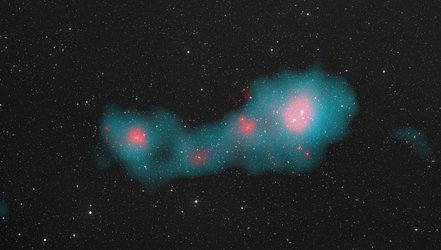Accept all cookies Accept only essential cookies See our Cookie Notice

About ESA
The European Space Agency (ESA) is Europe’s gateway to space. Its mission is to shape the development of Europe’s space capability and ensure that investment in space continues to deliver benefits to the citizens of Europe and the world.
Highlights
ESA - United space in Europe
This is ESA ESA facts Member States & Cooperating States Funding Director General Top management For Member State Delegations European vision European Space Policy ESA & EU Space Councils Responsibility & Sustainability Annual Report Calendar of meetings Corporate newsEstablishments & sites
ESA Headquarters ESA ESTEC ESA ESOC ESA ESRIN ESA EAC ESA ESAC Europe's Spaceport ESA ESEC ESA ECSAT Brussels Office Washington OfficeWorking with ESA
Business with ESA ESA Commercialisation Gateway Law at ESA Careers Cyber resilience at ESA IT at ESA Newsroom Partnerships Merchandising Licence Education Open Space Innovation Platform Integrity and Reporting Administrative Tribunal Health and SafetyMore about ESA
History ESA Historical Archives Exhibitions Publications Art & Culture ESA Merchandise Kids Diversity ESA Brand Centre ESA ChampionsLatest
Space in Member States
Find out more about space activities in our 23 Member States, and understand how ESA works together with their national agencies, institutions and organisations.
Science & Exploration
Exploring our Solar System and unlocking the secrets of the Universe
Go to topicAstronauts
Missions
Juice Euclid Webb Solar Orbiter BepiColombo Gaia ExoMars Cheops Exoplanet missions More missionsActivities
International Space Station Orion service module Gateway Concordia Caves & Pangaea BenefitsLatest
Space Safety
Protecting life and infrastructure on Earth and in orbit
Go to topicAsteroids
Asteroids and Planetary Defence Asteroid danger explained Flyeye telescope: asteroid detection Hera mission: asteroid deflection Near-Earth Object Coordination CentreSpace junk
About space debris Space debris by the numbers Space Environment Report In space refuelling, refurbishing and removingSafety from space
Clean Space ecodesign Zero Debris Technologies Space for Earth Supporting Sustainable DevelopmentApplications
Using space to benefit citizens and meet future challenges on Earth
Go to topicObserving the Earth
Observing the Earth Future EO Copernicus Meteorology Space for our climate Satellite missionsCommercialisation
ESA Commercialisation Gateway Open Space Innovation Platform Business Incubation ESA Space SolutionsEnabling & Support
Making space accessible and developing the technologies for the future
Go to topicBuilding missions
Space Engineering and Technology Test centre Laboratories Concurrent Design Facility Preparing for the future Shaping the Future Discovery and Preparation Advanced Concepts TeamSpace transportation
Space Transportation Ariane Vega Space Rider Future space transportation Boost! Europe's Spaceport Launches from Europe's Spaceport from 2012Latest

ISO discovers dust between galaxies
Thank you for liking
You have already liked this page, you can only like it once!
ESA's Infrared Space Observatory (ISO) has made the first direct observations of intergalactic dust. The graph shows faint emissions from cold intergalactic dust rising to a peak in the middle of the Coma Cluster of galaxies as ISO's ISOPHOT instrument scanned across. ISO's scans followed the two tracks plotted across the image. The two measurements gave similar results, which have been averaged to show the signal more clearly. This notable detection may have wide implications for cosmology and the evolution of galaxy clusters. The temperature of the dust is -220 to -240 °C. The cluster's oval appearance, being narrower north-south (top to bottom), was found in an analysis with the German-US-UK Rosat satellite. Contours of X-ray emissions, from gas at 80 million degrees, increase in intensity towards the cluster's centre but are not circular. Some evidence has been found in ISO's ISOPHOT scans that this non-circularity is also present in the infrared. Astronomers interpret the Coma Cluster's shape as evidence that it is colliding and merging with a smaller cluster of galaxies. This collision perhaps explains how the intergalactic dust clouds were created - fierce gas winds might be expelling dust from the galaxies. The two large galaxies near the centre of the Coma Cluster have been stripped bare of dust. [Image Date: 1997/11] [97.11.011-001]
-
CREDIT
ESA/ISO, M. Stickel, D. Lemke & ISOPHOT team (ISO graph and scan lines); STScl Digitized Sky Survey (visible-light image); Rosat Data Archive & S. White, A. Vikhlinen. -
LICENCE
ESA Standard Licence

Shapley Supercluster

ISO searches for the origins of stars and planets

Hubble images colliding galaxies

ISO observes cosmic IR background galaxies















 Germany
Germany
 Austria
Austria
 Belgium
Belgium
 Denmark
Denmark
 Spain
Spain
 Estonia
Estonia
 Finland
Finland
 France
France
 Greece
Greece
 Hungary
Hungary
 Ireland
Ireland
 Italy
Italy
 Luxembourg
Luxembourg
 Norway
Norway
 The Netherlands
The Netherlands
 Poland
Poland
 Portugal
Portugal
 Czechia
Czechia
 Romania
Romania
 United Kingdom
United Kingdom
 Slovenia
Slovenia
 Sweden
Sweden
 Switzerland
Switzerland

























